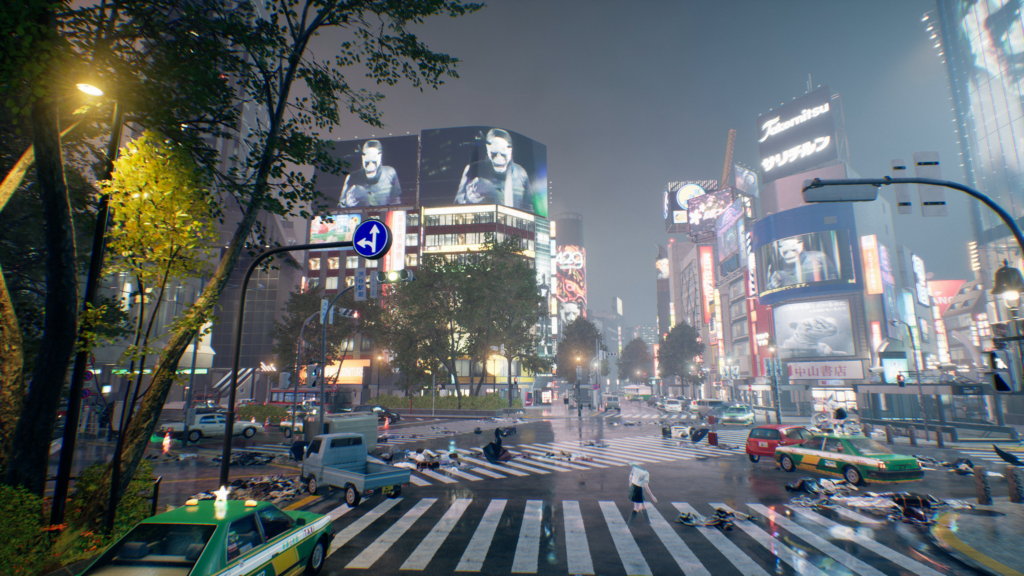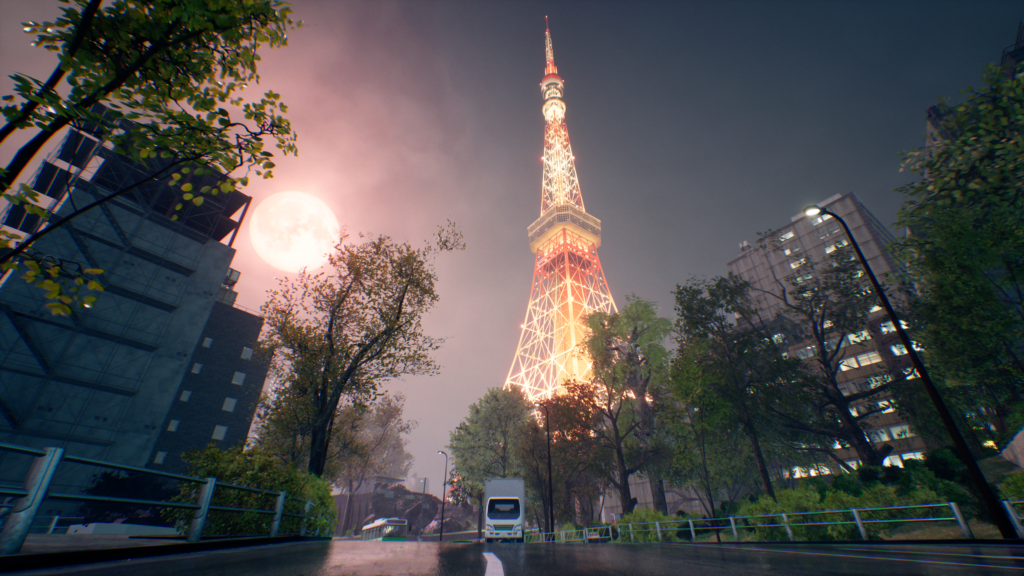First Impressions
Ghostwire: Tokyo introduces a fascinating world to explore, with the creepy take on Tokyo and exploration into Japanese mythology proving a very different experience compared to other action RPGs from Bethesda. However, the combat can be both boring and frustrating, despite the range of supernatural abilities at your disposal, putting a big dampener on this supernatural thriller. Hopefully things get better beyond the first two chapters.
Availability
- UKRRP: £59.99
- USARRP: $59.99
- EuropeRRP: €69.99
- CanadaRRP: CA$79.96
Key Features
- Genre: Action RPGWhile Ghostwire: Tokyo may flirt with horror tropes, this is an action RPG that features very few jump scares
- Release date:Available from 25 March 2022
- Platforms:PC and PS5
Introduction
Players have been let loose in Tokyo in countless video games over the years, but the capital city of Japan feels very different in Ghostwire: Tokyo.
The bustling crowds have disappeared, with no humans left in sight. Instead, hostile ghoulish figures roam the streets. Some look like faceless office workers, while others take the form of headless schoolgirls, with their sinister cackles echoing through the empty streets.
Ghostwire: Tokyo has an unmistakable eerie tone, with Tango Gameworks (the creator of The Evil Within series) weaving in multiple horror tropes from Japanese mythology to create both an unsettling and unique setting.
But those with a faint heart needn’t worry, since Ghostwire: Tokyo lacks the tension and jump scares to truly be considered part of the horror genre. Instead, this is an action RPG with a first-person perspective, featuring shades of Elder Scrolls and Fallout, despite swapping swords and guns for paranormal abilities.
Bethesda Softworks granted me access to the first two chapters of Ghostwire: Tokyo on PS5. Here are my initial thoughts after playing through the first few hours.
Story
- Unique take on Tokyo as a setting
- Intriguing premise gets you hooked quickly
- Open-world format feels a little archaic
Ghostwire: Tokyo plonks you right in the centre of Tokyo during an apocalypse, the city’s residents disappearing as a mysterious blanket of fog descends onto the city.
You assume the role of Akito, an ordinary Japanese man who is seemingly the sole survivor of the purge. That’s clearly thanks to a spirit called KK, who possesses Akito to bestow him with supernatural powers.
While KK isn’t able to control his body, he’s able to converse with Akito, offering explanations for the supernatural ongoings and guidance to rid the city of the ghostly visitors. Dialogue is in Japanese by default, with subtitles offering translations for English speakers. You’re able to switch to an English dub if you prefer, although this does noticeably see a decline in the quality of voice acting.


The story adds a few interesting twists, with Akito’s sister inexplicably becoming a person of interest to chief antagonist, Hannya. I’m intrigued to see how the story unfolds – although, personally, I don’t think it’s the main pull of Ghostwire so far. The side quests are more interesting, as you mostly help spirits complete their ‘unfinished business’ in order to find peace.
The world that Tango Gameworks has created is more intriguing than the plot, with spirits patrolling the streets and yokai – in the form of floating cats – selling goods at street-corner shops.
Those unfamiliar with Japanese folklore may find the tone’s shift between sinister and goofy a tad jarring. At one point, I met a talking raccoon that asked me to seek out its hidden friends in the city. It feels out of place in a game with plenty of supernatural horrors, although Japan does have a very different view on spirits than we do here in the West.


I’m also a little concerned that the open-world map may be a little too formulaic. It’s covered with icons and points of interest, such as shrines that hide valuable items and corrupted Torii Gates that can be cleansed in order to dispel the damage-inflicting fog.
As a result, I never felt curious enough to venture off the beaten path and explore the city at my own pace. Having a checklist of objectives to complete feels archaic having come to this game from Elden Ring. That said, I’ve only explored a small chunk of the world so far, so hopefully things become a little bit more unpredictable further in.
Combat
- Variety of supernatural powers
- Can upgrade attacks via skill trees
- Ranged combat can get boring
Ghostwire: Tokyo offers up an arsenal of supernatural powers called Ethereal Weaving, with fire, air and water attacks diversifying your options. I haven’t encountered any enemies that are particularly weak to one of these attacks, so I’m not sure if there’s some sort of rock-paper-scissors system at play, but they do vary in function.
Wind attacks have the longest range but deal less damage per hit, while slashes of water can deplete enemy health bars quickly in up-close combat. Blasts of fire seem to hit the sweet spot between damage dealt and range, but ammunition is sparse compared to the other two options.


Bizarrely, ammunition is gained by destroying floating inanimate objects. It can be pretty tedious having to seek out such items every time you’re running low on charges, especially during a boss encounter. Fortunately, you can upgrade your attacks via skill trees to not only improve your reserves, but also make such attacks deal even more damage.
I’ve also unlocked a bow, which is a great alternative to the supernatural abilities. But since arrows are even more scarce than Ethereal Weaving recharges, I’ve only used it as emergency backup.
You’re also able to block attacks with a phantom shield, although you can only avoid taking damage via a perfect parry. The time window to achieve this is fairly generous, but it isn’t very useful when facing a barrage of attacks simultaneously. Keeping a safe distance from enemies seems to be the best tactic, especially since the majority of foes move fairly slowly. As a result, most of the combat I’ve engaged in so far has been easy to overcome, even at the ‘hard’ difficulty setting, making combat a bore with little strategy required to succeed.


That changes drastically when faced with a boss encounter. When enemies are able to get close to you quickly, you’re put at a huge disadvantage. There’s no dodge button to evade attacks, and the shield is borderline useless when attempting to deflect a combo of attacks. I coasted through the first few hours of Ghostwire: Tokyo – until I reached the first major boss battle, which proved so troublesome that I had to lower the difficulty in order to progress.
As such, the combat feels frustratingly imbalanced right now. If I had purchased this game, I’m not sure I’d want to continue playing. But I’m hopeful that combat will be improved with a greater variety of enemy types and new weapons – or hell, even a dodge mechanic – to make up-close combat more enjoyable.
Graphics
- Tokyo looks great with ray tracing activated
- Character models look poor for next-gen hardware
Tokyo city looks fantastic in Ghostwire: Tokyo on the PS5. Neon signposts on towering skyscrapers are reflected in the puddles when ray tracing is activated, while the great variety of buildings make the city feel alive, despite the desolate streets.
I’ve also enjoyed levels that see you venture through dark, claustrophobic corridors of hospitals and underground subway stations – a more linear format that acts as a welcome respite to open-world exploration.


The various ghouls and monsters look brilliant, too, with creepy designs contributing to that horror-esque tone. Every now and then, your surroundings will be distorted via supernatural visions, with rooms being turned upside down to disorientate your senses.
However, character models don’t look quite as impressive. Akito’s face looks devoid of emotion, even during traumatic cutscenes. The detail in his face pales in comparison to other modern-day games such as Horizon Forbidden West, which is disappointing given that this game is only available on PS5 and PC, so doesn’t need to cater to older consoles.
On the plus side, I haven’t noticed any technical issues when playing the first few hours of Ghostwire: Tokyo. The frame rate seems steady, and you get the option to prioritise performance or visuals, as you do with most new-gen games. It feels polished so far, although I can’t speak for the performance on PC, having only played on PS5.
Latest deals
Initial Verdict
I’m not overly impressed by Ghostwire: Tokyo so far. Combat feels imbalanced, either too easy thanks to your arsenal of long-ranged attacks, or too difficult when fast-moving enemies chase you down since there’s no effective dodge mechanic. And there aren’t enough interactive elements elsewhere to make up for the combat’s shortcomings.
That said, I’ve only played a couple of hours of the game, so it’s very possible that Tango Gameworks is able to find the perfect balance, either by the introduction of new weapons or enemy types.
I hope that turns out to be the case, since this supernatural spin on Tokyo feels like a unique setting that’s worth exploring, especially if you’re a fan of Japanese mythology.
FAQs
No, Ghostwire: Tokyo will only be available on PS5 and PC at launch.
Sort of. Ghostwire: Tokyo features an open-world map which you can explore and complete side quests. But most main missions will have a linear structure, taking place in the likes of hospitals, skyscrapers and subway tunnels.
Jargon buster
Ray Tracing
Advanced light-rendering technology that allows for more realistic lighting and shadow effects within in-game worlds.
from WordPress https://ift.tt/F8G30KR
via IFTTT











0 Comments